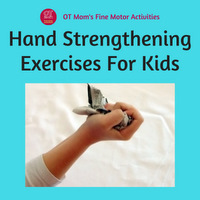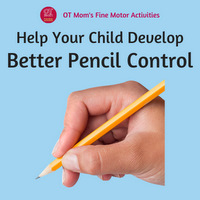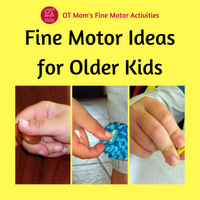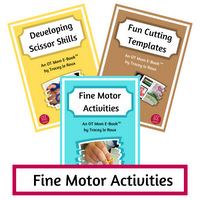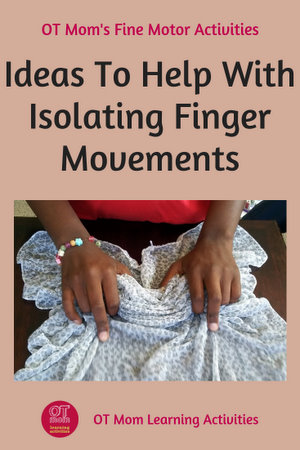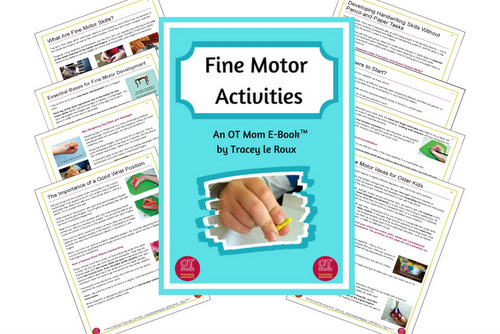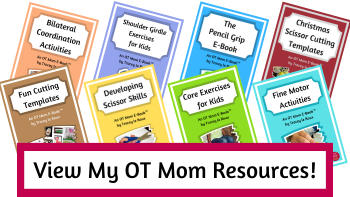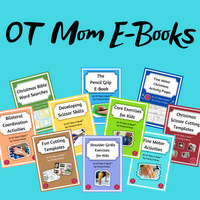- Home Page
- Fine Motor Activities
- Isolate Finger Movements
Isolate Finger Movements
Learning to isolate finger movements is a key step to mastering many fine motor activities. Playing a musical instrument, typing on a keyboard, doing needlework and craft work all require finger dexterity and isolated movements of the fingers.
Here are some activities that may help your child to isolate movement of the fingers:
If you are at all concerned about your child's fine motor skills, please consult an occupational therapist. These activities are meant to enhance your child's development, not substitute for therapy!
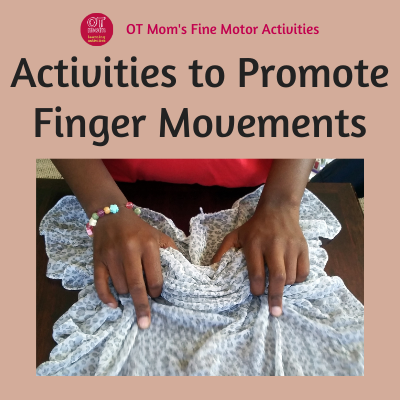
Please note that the activities demonstrated below are designed to help isolate movement of ALL the fingers, which may help with keyboarding and playing a musical instrument, as well as with general finger dexterity and fine motor skills.
For more specific use of just the tripod fingers for pencil control, please see my tripod finger exercises.
Walking A Scarf
If you have a lightweight neck scarf (the longer and lighter, the better), then this finger exercise will be an easy one to set up.
I put a little toy on the end of the scarf to give the child an incentive to walk the scarf in.
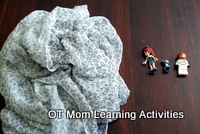
Spread the scarf out on a suitable flat, smooth surface like a table.
The ends of the scarf should lie flat and smooth, but it's fine if the middle of the scarf is a bit folded in order to fit on the table.
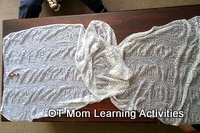
Bilateral Finger Movements
Your child needs to use the fingers of both hands to "walk" the scarf towards the edge of the table, as shown below. The fabric will gather together and the little toy will make its way towards your child!
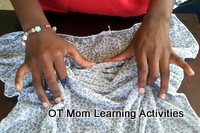 using walking movements of the fingers
using walking movements of the fingers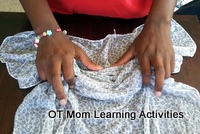 using both hands at the same time
using both hands at the same time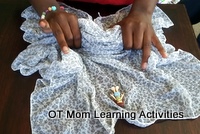 encourage your child to use all the fingers
encourage your child to use all the fingersEncourage your child to use "walking" finger movements, and not grabbing movements. Encourage your child to move each finger in turn.
Kids who struggle with bilateral integration may find it difficult to use both hands together like this. You can check out my page of bilateral activity ideas to help.
Adaptations of This Activity
This finger activity can also be done with just one hand, as shown below.
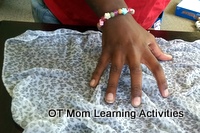 Using just one hand at a time
Using just one hand at a time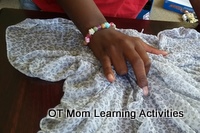
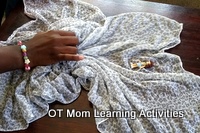
If your child struggles to mobilize the thumb, then do the finger walking just using the thumb. Lay the hand sideways on the scarf then move the thumb out and in, to gather the fabric.
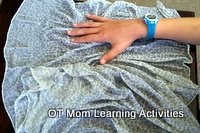 Using the thumb to crumple up the scarf
Using the thumb to crumple up the scarf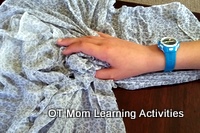
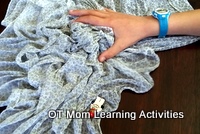
Isolate Finger Movements With A Ball
You can use any size of round kiddie ball for this activity, as long as it is not too heavy for their hands. I have used a variety of balls as you can see in the pics!
Ask your child to walk the ball up and down a leg with the fingers and thumb. Walking the ball down actually takes more control!
You can ask your child to walk the ball up one leg, across the tummy and down the other side.
The larger balls tend to get more fingers involved, but smaller balls can be useful as you can upgrade the activity to requesting that just one or two fingers and the thumb should do the walking. (Keep the other fingers out of the way by holding some paper under those fingers.)
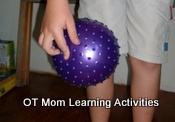 Using all fingers to walk the ball
Using all fingers to walk the ball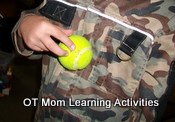 Using just the tripod fingers
Using just the tripod fingers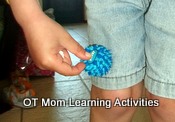 Using just the thumb and index fingers
Using just the thumb and index fingersJust as with the scarf activity, encourage your child to use the fingers in a walking motion, rather than a quick grabbing motion.
I hope these ideas are helpful to you! Both the scarf walking activity and the ball walking activity use resources you probably already have at hand, so they are ideal to keep nearby to use before handwriting or music lessons, as quick finger isolation activities!
If you are looking for more fine motor activities, check out these pages of my site:
Try my fine motor e-book for loads of fine motor activities at your fingertips without having to wade through my whole site!
Thanks for visiting! Why not sign up for my free, occasional newsletter to stay in touch with new pages and activities on my site?
- Home Page
- Fine Motor Activities
- Isolate Finger Movements
Share this page to help others!
Improve Your Child's Fine Motor Skills Today!
For parents seeking practical activities to improve fine motor skills with everyday resources, check out my comprehensive e-book.
It offers step-by-step instructions and dozens of hands-on activities designed to support your child's development.
Discover a treasure trove of ideas to help your child develop fine motor skills through play!
Didn't find what you were looking for? Try a search of my site!
